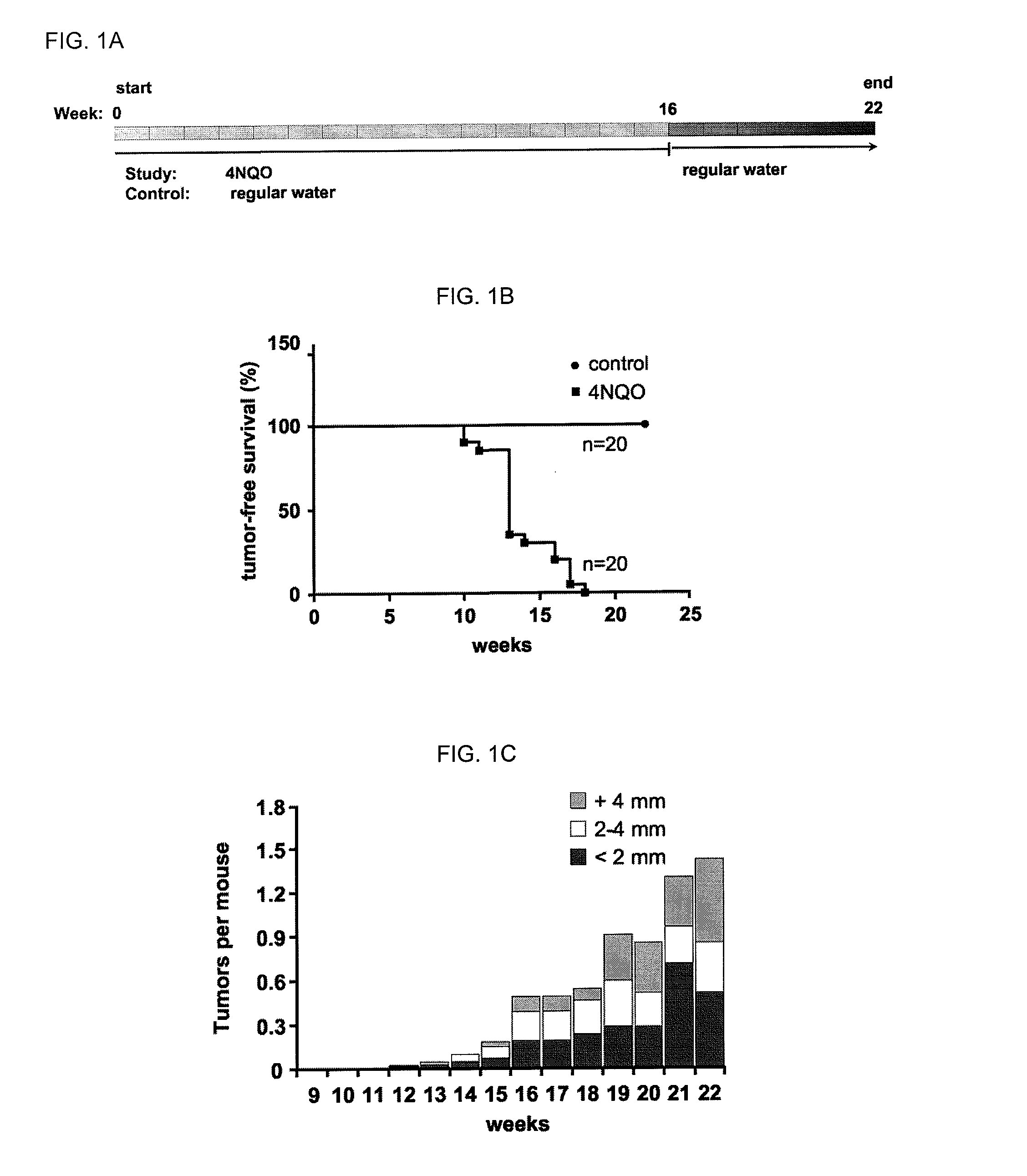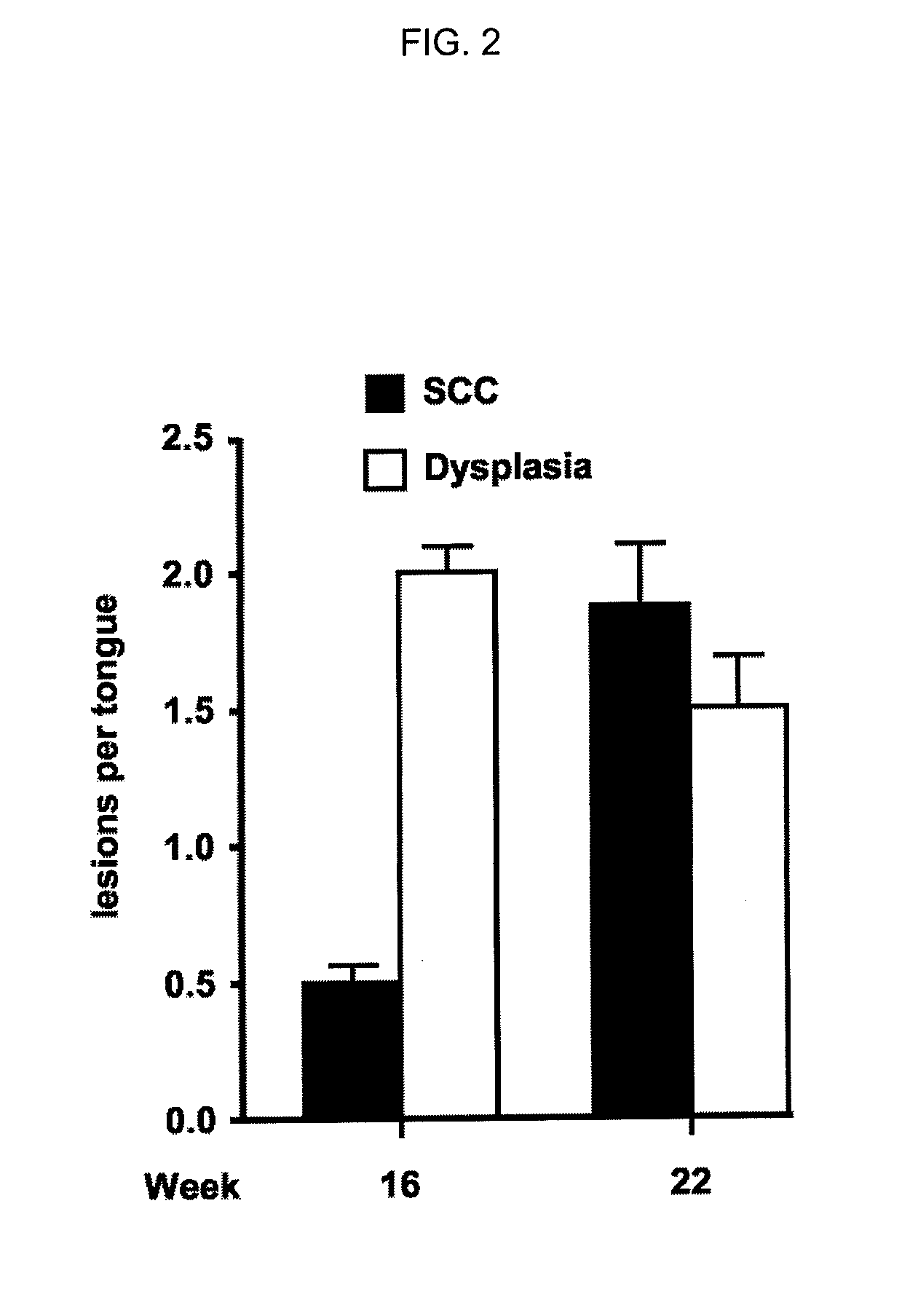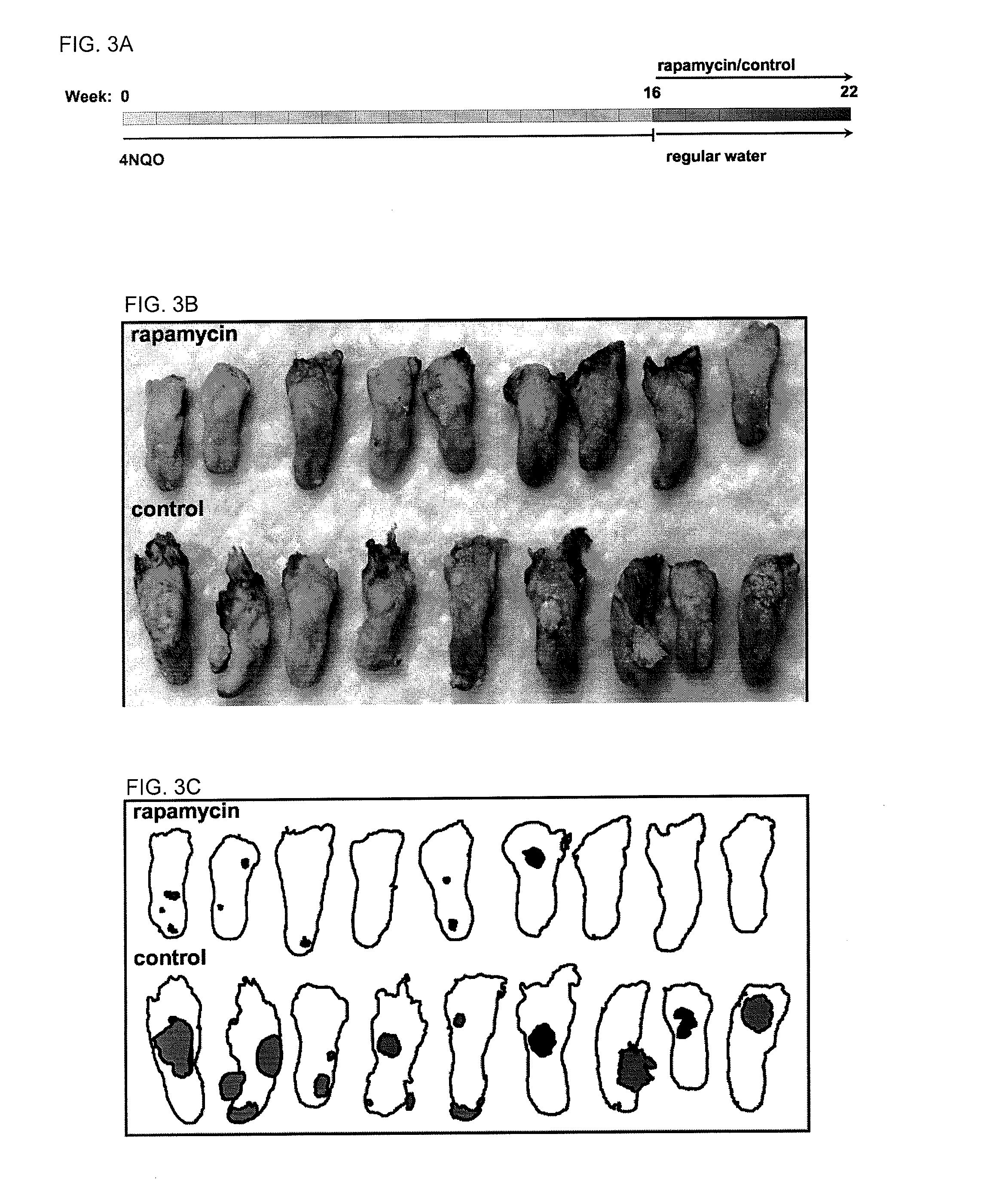Chemoprevention of head and neck squamous cell carcinomas
a squamous cell carcinoma and chemotherapy technology, applied in the field of chemotherapy for can solve the problems of poor prognosis of hnscc patients, high individual disfigurement, and nearly 11,000 deaths each year, and achieve the effect of preventing the development of head and neck squamous cell carcinoma
- Summary
- Abstract
- Description
- Claims
- Application Information
AI Technical Summary
Benefits of technology
Problems solved by technology
Method used
Image
Examples
example 1
[0043]This example illustrates the methodology used in carrying out tests in support of embodiments of the invention.
[0044]Materials: 4-Nitroquinoline-1 oxide (4NQO) obtained from Sigma Aldrich (St Louis, Mo.) was dissolved in propylene glycol (Sigma Aldrich) as stock solution (4 mg / ml), stored at 4° C., and diluted in the drinking water to a final concentration of 50 μg / ml. Water was changed weekly. Rapamycin was purchased from LC Laboratories (MA) dissolved in 100% ethanol to a 20× concentration and stored at −80° C. Prior to its intraperitoneal administration (5 mg / kg), this concentrated stock of rapamycin was diluted in an aqueous solution of 5.2% Tween 80 and 5.2% polyethylene glycol (USB, Cleveland, Ohio and Polysciences Inc, Warrington, Pa., respectively).
[0045]Methods: Animal studies were carried out according to NIH-approved protocols, in compliance with the Guide for the Care and Use of Laboratory Animals. Female C57B1 / 6 mice (Harlan Sprague-Dawley, National Cancer Institu...
example 2
[0048]This example illustrates an experimental oral chemical carcinogenesis model to identify HNSCC development and progression in a mammal.
[0049]In particular, this example illustrates the use of 4-nitroquinoline-1 oxide (4NQO), a synthetic water soluble organic compound that forms DNA-adducts thereby causing adenosine for guanosine substitutions and induces intracellular oxidative stress resulting in mutations and DNA strand breaks, as a carcinogen. The changes in the cellular DNA induced by 4NQO administration are typical from those provoked by tobacco carcinogens, hence serving as a surrogate of tobacco exposure. The extensive optimization of the experimental conditions using a variety of mouse strains led to establish a general procedure for the administration of 4NQO depicted in FIG. 1A, which resulted in the progressive appearance of tumoral lesions in the tongue and oral mucosa that were preceded by clearly identifiable preneoplastic events.
[0050]C57B1 / 6 mice, one of the mos...
example 3
[0056]This Example illustrates a method of inhibiting the mTOR function with rapamycin in accordance with an embodiment of the invention.
[0057]The treatment with rapamycin reduces the tumor burden in the 4NQO-induced oral carcinogenesis model. Mice were given 4NQO (50 μg / ml) in the drinking water for 16 weeks, and then divided into a rapamycin-treated group (5 mg / kg / day; i.p.) and a control group (vehicle control; i.p.), and reverted to regular water until week 22. All animals were euthanized on week 22, and complete autopsies performed. B. Pictures of representative tongues of control and rapamycin-treated mice, showing a decreased tumor burden in the rapamycin treated group. Histological analysis of each tongue enabled the digital representation of each of the SCC lesions in the dorsal tongue. Multiple tissue sections from each tongue were examined, and the number of HNSCC lesions, including large HNSCCs and microcarcinomas, per tongue were represented individually for both, the c...
PUM
| Property | Measurement | Unit |
|---|---|---|
| body weight | aaaaa | aaaaa |
| concentration | aaaaa | aaaaa |
| concentration | aaaaa | aaaaa |
Abstract
Description
Claims
Application Information
 Login to View More
Login to View More - R&D
- Intellectual Property
- Life Sciences
- Materials
- Tech Scout
- Unparalleled Data Quality
- Higher Quality Content
- 60% Fewer Hallucinations
Browse by: Latest US Patents, China's latest patents, Technical Efficacy Thesaurus, Application Domain, Technology Topic, Popular Technical Reports.
© 2025 PatSnap. All rights reserved.Legal|Privacy policy|Modern Slavery Act Transparency Statement|Sitemap|About US| Contact US: help@patsnap.com



